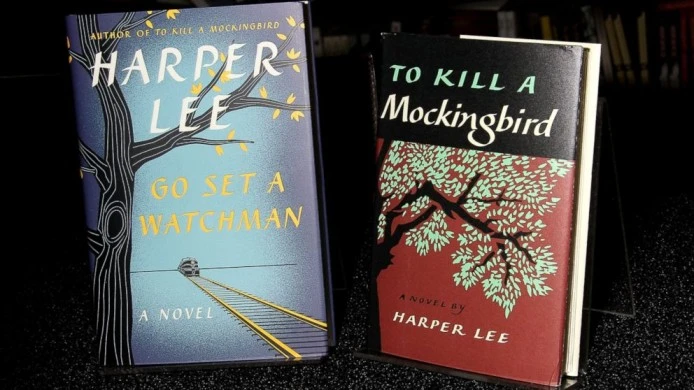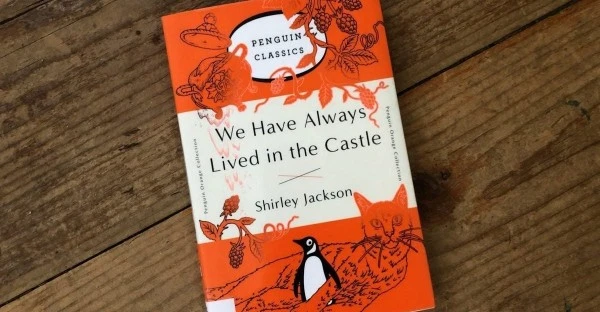This Is Big: How the Founder of Weight Watchers Changed the World and Me, By Marisa Meltzer: An Excerpt
PROLOGUE
It was the beginning of the fall in Queens in 1961. Jean Nidetch woke up feeling sylphlike even though she weighed 214 pounds. She put on a muumuu, a dress she considered a fat woman’s boon because it hung nicely over everything and in the pockets she could squirrel away pistachios. Her driver’s license weight was 145 pounds, which she hadn’t been since before high school. But nobody weighed you at the DMV.
“I was even a fat child—I haven’t forgotten it,” she was fond of saying in her strong outer borough accent. “I wanted to be the pretty one. A fat kid never hears the words pretty, adorable, cute, handsome. Instead they’re always good, honest, neat, clean, trustworthy.”
She walked through Little Neck to the supermarket, where she passed rows of Quisp cereal and stocked up on graham crackers for her young sons. She lingered in the sweets aisle, filling her cart with bright yellow boxes of the delicious, pillowy chocolate-covered marshmallow cookies called Mallomars. These were what she called her Frankenstein, a favorite treat and bête noire, and the real reason she’d come to the store. She’d taken to storing them in the hamper in her bathroom where she would sneak in, lock the door, and consume three satisfying boxes at a time. She tried to make a joke out of it: “One cookie plus one cookie equals eleven.” Afterward she always promised herself she’d quit Mallomars, but her resolve never lasted more than a few days.
[ Return to the review of “This Is Big.” ]
That September morning Jean found herself back at the supermarket, stocking up once again. The boxes of cookies were for her children, she’d tell the checker. It was a cycle that she thought she’d never break. Being fat was just being unlucky in life, and despite that, Jean felt like she had done well. She was 38 years old, happily married to a nice husband who drove a bus and was fatter than she was, which meant she could still feel small and ladylike. Their love was a tale of two gourmands. “[We] knew every restaurant in New York that did second helpings, and we knew every restaurant in Queens that didn’t charge for dessert.”
Then Jean spotted a woman she’d met on occasion in the neighborhood, standing over by the cantaloupes. She hadn’t especially liked her the first time they’d been introduced, but Jean was a good housewife and a purposefully outgoing person. Jean figured that if she was going to be fat, at least she had to be friendly to make up for it.
“Jean you look so wonderful,” the woman told her. “Did you have a good summer?” Jean, flattered, answered that she had. She thought not of sun and sand but of the concession trucks that made their way up and down the streets of Little Neck selling ice cream, donuts, pizza, and sandwiches that she’d run to catch up to, something only kids were supposed to do.
“You look so marvelous,” the woman said again, looking her up and down. “When are you due?”
To say that it was a moment that Jean would never forget, that would define and transform the rest of her life, is an understatement. She decided right there in front of the full-length mirror in her bedroom to be grateful to the woman at the supermarket. Not because she liked her or would even forgive her, but because she gave her what she needed.
•
What’s your why? is a popular question at Weight Watchers. There are hats emblazoned with it you could in theory wear but, frankly, I would rather get a sunburn. I hate being asked why I’m trying to lose weight. Isn’t dieting one thing that you don’t have to justify? Can’t you see my stomach grazing the table when I slid into booths, or that I can’t really cross my legs?
One week after my 40th birthday, in mid-July 2017, I joined Weight Watchers for the first time since the 1980s. I did a bit of research online and members seemed to like a Sunday meeting in Park Slope in Brooklyn. I decided to go the next week. I took a shared Uber there and the driver had navigation on. As I got into the packed car, the GPS robot voice said, loud and clear, “Destination is Weight Watchers Park Slope.” I was mortified.
The meeting is in a retail space, with a counter with Weight Watchers’ signature number-less scale and gum and 3-point cake mixes designed to be made and microwaved in mugs for sale.
I weighed myself for the first time in maybe four months. Two hundred and sixty-two pounds exactly, more than my father weighs, and he’s about eight inches taller. I am just a few pounds shy of my heaviest weight ever, which means I have gained back all but three of the 70 pounds I lost five years ago on a low-calorie, high-protein, low-carbohydrate diet supplemented, frankly, with a lot of meal skipping.
I am what the writer Roxane Gay has called “Lane Bryant fat” or what some fat acceptance types call “small fat.” What that means to me is that sometimes I don’t fit into the largest straight-size (i.e. not plus size) clothes and am forced to buy size 16 pants online, where most retailers “extended sizes” are available. God forbid they keep them in stores where their fat customers could be seen shopping. I don’t need a seatbelt extender in an airplane. I have never not fit into a chair. I have, however, broken a chair, while eating a cupcake, just before going to a club and seeing my recent ex-boyfriend making out with a skinny brunette gallerist on the dance floor.
•
At 4:00 pm on October 30, 1962, about a year after she enrolled at a New York City Health Department obesity clinic, Jean reached her goal weight of 142 pounds, for a total loss of 72 pounds. It took a year of hard work. “You want a miracle too, don’t you? I know. We all want miracles. Unfortunately, it doesn’t work that way,” she later said. “I’ve heard the complaints before. ‘Takes too long.’ ‘I can’t wait.’ And I always tell people that the time is going to go by anyway – one way or another. You got to have a dream, and being slim is the dream in this case. Sometimes it’s better not to focus too far ahead. Maybe all you’re going to see that way is an uphill climb.” She immediately gave away all her clothes but one dress to serve as a reminder of her former self. She vowed never to touch chocolate marshmallow cookies again. Sometimes she’d let herself eat potatoes or an extra piece of bread or another kind of dessert, but Mallomars were like her size 44 dresses: never again.
“I look the L out of flab,” Jean was fond of telling people. She celebrated with a makeover, buying, like Jackie Kennedy, shift dresses and fitted suits in chic shades of black and cream. She now wore a size 12, the modern equivalent of a size 6, and roughly the same dress size as Marilyn Monroe. “I craved beautiful clothes and looked good in them. When I lost my weight, I felt like I was the one that housewife who found the fountain of youth and I wanted to give it to others,” she said.
[ Return to the review of “This Is Big.” ]
Jean took to carrying a before picture with her at all times and liked to show off her own then-and-now success story. She had always been a leader, from Vice President of her high school class to the president of a local volunteer league. “Whatever organization I got into, I usually ended up heading it,” she said. She was filled with tips and advice and loved to share—maybe because she saw weight loss as a lifetime commitment and a struggle that even though she was now thin, would never be over. There was no normal. “I pray that I never forget where I came from. I pray that I’ll never get to the point where I’ll think I’ve always been thin, successful, and at the end of the rainbow. I don’t know of anybody who has been fat who ever feels totally safe again. We know we’re not cured. We’re merely arrested.”
•
I have grown obsessed with Miriam, my Weight Watchers leader, who is unlike any I had ever seen, or even imagined. She is a vegan, Jewish mom in her late 40s. She’s a native New Yorker in a polka dot dress with blue ombre hair (that she says is sometimes also platinum, sometimes also pink or purple) and tattoos of skulls and roses and Hebrew script, all acquired after she lost the weight. She didn’t grow up fat like me; in fact, she was a competitive gymnast who trained four hours a day, four days a week. When she quit, at age 17, she gained 15 pounds in a month. She was eating because she was depressed, relieved, and dealing with chaos in her family life. But she had been so small that 15 pounds just meant she started to look like an average teenager. By the time she left for college in Southern California, she was a normal weight—she could maybe could lose 5 or 10 pounds—but then ate her way through the next four years, gaining 30 pounds or so. She and her husband met there and married soon after and, like Jean, she wore the best dress she could find in her size to her wedding.
The turning point was a few years later when she signed up one of her two young daughters for gymnastics. “We get there at 8:45 and I take off her sweatpants and her little jacket and sneakers and I put them in a cubby hole and there she is with her little pig tails and her bangs and her whole black leotard. She just wandered off in with the teacher and I looked and burst into tears,” Miriam said. “The woman standing next to me saw that I was crying and tapped me and she’s like, ’Is it your daughter’s first day?’ And I was like, yes.” The woman told her she had cried at her daughter’s first day too. “She had no clue I saw my reflection. I was like, when I was four, I ran in and I did it and this is what I’ve become. I’m the fat mom, out here, looking in. How did I let this happen? I was so disappointed, I was angry with myself.” Worse yet, the man who owned the gym had been one of Miriam’s coaches for a team she had been on and she was so afraid he would recognize her. Or what if she had gained so much weight he didn’t? She joined Weight Watchers after that, in November 2000, when she was about to turn 31. It took her 17 weeks to lose 55 pounds.
•
Ten weeks into her weight loss, Jean announced to her friends that she had lost 20 pounds. They wanted to know her secret. So she decided that on a Wednesday six of her friends who all struggled with dieting would go to Jean’s apartment to play mah jong and she’d tell them what she had learned the day before in diet class. She wasn’t yet at her goal weight, and she thought it would help her stick to the clinic’s strict diet guidelines and maybe they’d lose some weight, too.
The first meeting was a low-key affair. They settled in to play and chat. “They all have their secrets, their compulsive habits like mine that they kept to themselves,” Jean said. But that afternoon they opened up to each other. “It was a liberating experience for all of us. It was just such a great relief for us to be able to confess these things for the first time and get over the embarrassment.” Someone suggested they meet again the following week, and Jean suggested they make it a weekly thing. That’s how Jean the housewife created a space where a group of women struggling with their weight could come together and be honest about their lives. But it also gave Jean the spotlight she craved, a place to be funny and charismatic and glamorous, even if it was for an audience of a few friends. Years later she reflected back on those early meetings and said, without a trace of modesty, “It’s as if, having never had a lesson, I sat down to a piano and played a concerto.”
•
A few months and fifteen pounds down, I had so far refused to make weird Weight Watchers recipes, which felt like the modern versions of things that would have been printed in the magazine in the 1960s, like these three-point “bagels” people at the meeting had been talking about. You mixed one cup of self-rising flour with one cup nonfat Greek yogurt, painted the “bagels” with egg wash, sprinkled them with everything-bagel seasoning, and baked. To this, Sadie, the Orthodox Jewish meeting regular hissed, “That is not a bagel.” Nor was a “pancake” made with self-rising flour and non- fat Greek yogurt and a banana a pancake. I would rather have eaten just one fluffy blueberry pancake or half a real bagel. But who could do that? Certainly not me.
I wish there were an alternative, something besides completely eliminating that which tempts you or substituting for what you really want with something that only sort of resembles it. There is another philosophy toward food: having something rich but not overindulging. Moderation can definitely be taught, and I’ve done the elaborate dessert-eating exercises to prove it, but I am not entirely convinced I can learn it. There is a huge difference between food I enjoy and food that’s good for me, although Weight Watchers would like us all to think that’s not the case. Dieting is at odds with pleasure. A certain person can build a life around denying pleasure, but I can never exist in that mode for very long and be happy.
•
Losing weight for Jean was magic, it symbolized potential, and it had the potential to bring strangers together. “In Israel, the Jews and Arabs sit together at our classes,” Jean Nidetch said in 1993, “and, you know, they don’t hate each other at all. They’re just interested in what they ate for breakfast.” Jean believed that sharing made us human, and that struggling with weight could be unifying rather than isolating. From frustration, one could find community. Every one of us has our own Frankenstein, our most obsessed over food, as Jean was so fond of saying. And that was also her genius: if we all have complicated relationships to food then we are all potential Weight Watchers members. She knew that what fat people needed more than a plan and a program was the support of each other, a place to vent or share notes or just listen. For Jean, a diet wasn’t a tool of oppression, but just another way of keeping ourselves on track and having a plan for the future.
Jean said, “You measure success by the length of time people can keep their lost pounds off.” That’s certainly how she measured her own success. But that strict definition was its own kind of prison. Jean lost a tremendous amount of weight and essentially, for the rest of her life, lived in the gilded cage of her own weight loss.
For my whole life I have felt like I have been forced—or have forced myself—to choose between two opposing ideologies: to diet or to embrace not dieting. So much of my frustration stems from feeling like I have to choose one path or the other, working to change myself or hating myself, and I am destined to fail at both. Both paths represent an attempt to change myself and a reason to hate myself. The promises made on both sides are highly seductive. Do you find liberation through refusal or through acquiescence? My utopia is to reject both paths or, rather, to draw them together.
Perhaps the only way forward is to understand that many of us might always want to diet and that we may in fact be happier and, possibly, healthier losing some weight. Dieting— whether or not you lose—can be addicting; restriction offers its own special kind of logic.
Arriving at a nonbinary place takes work. It means you have to stop and think, a lot, about what you want, what society wants, and what you’re willing to sacrifice. People love to ask, “What is the best diet?” The answer is the one that you can live with and not simply endure, the healthiest way of life that also keeps you happy. Peace is not blind capitulation to dieting culture or fat-acceptance culture.
We can want to lose weight for all kinds of reasons, from vanity to health. But at the same time we can want to live in a world where there’s less importance put on what our bodies look like. I am just beginning to understand that I will always live in that paradox, that I accept myself as a person who struggles to change. If I can find greater happiness doing that with what I choose to eat and how much I weigh, imagine what I could do when applying it to the rest of my life.
[ Return to the review of “This Is Big.” ]




